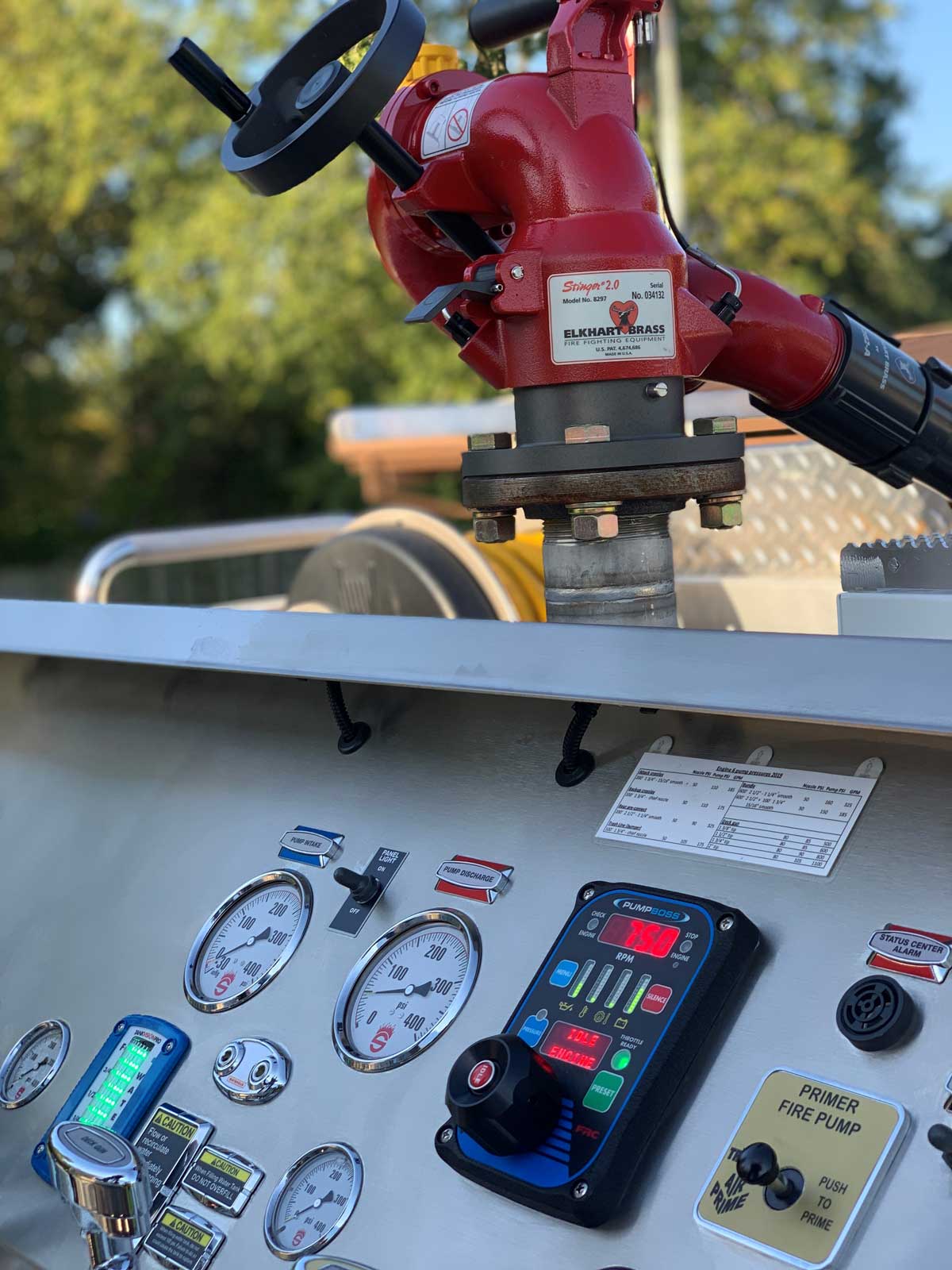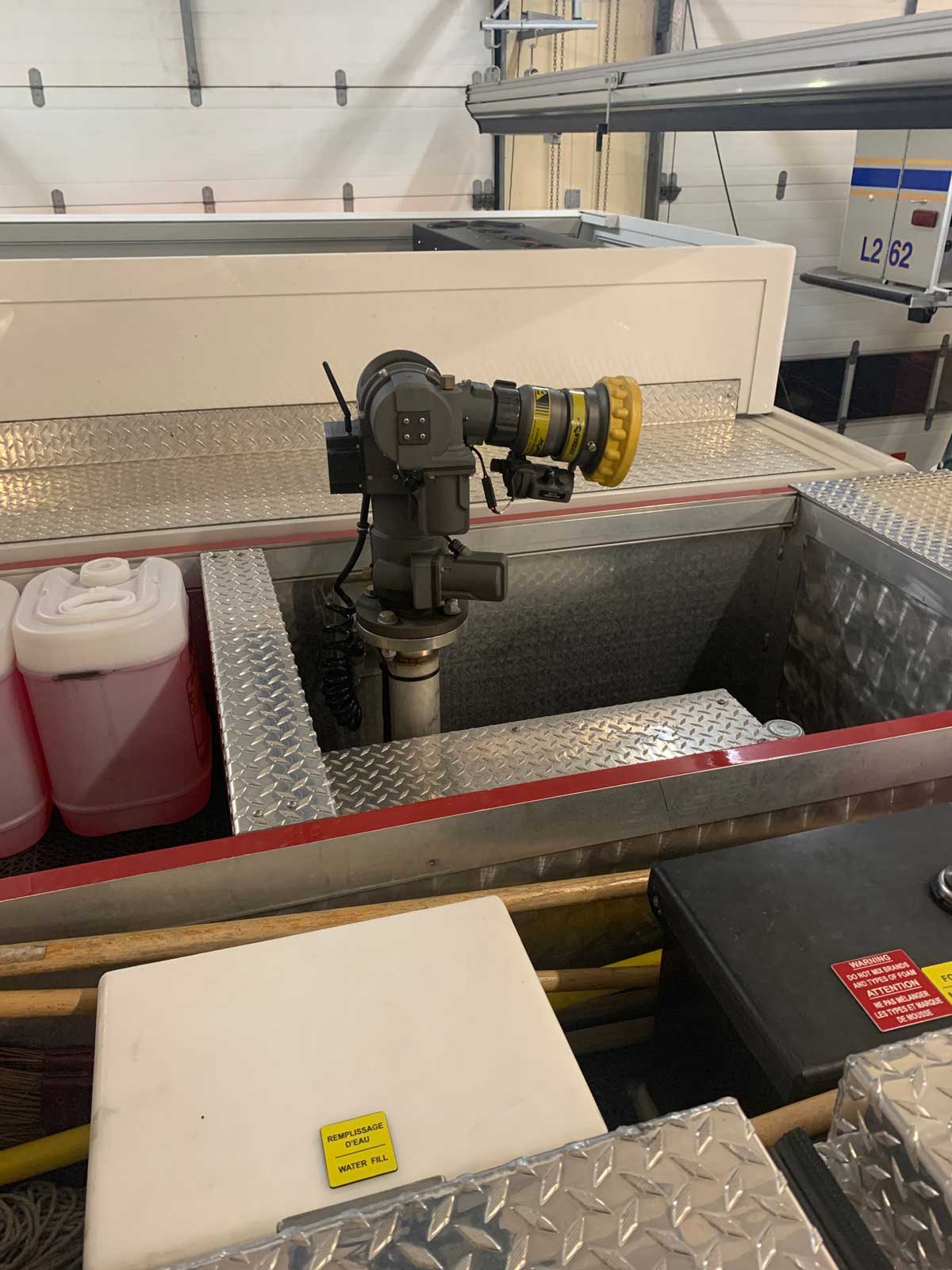
Last month we looked at the functions of the truck company with respect to an elevated master stream. This month we will look at the similar functions of an engine company with respect to master stream operations. The primary job function of an engine company is to suppress fire. This is accomplished by using different size hoses and delivering water from the source to the fire.
One such method of water delivery is using master streams. The engine company has a few different options when it comes to master streams. Most engines will have a master stream device on top of the apparatus which is fixed (photo 1). This device can be armed with either a straight tip nozzle or a combination nozzle. The advantage of a straight tip is the distance of reach that can be achieved when flowing water. You will also achieve a true straight stream or solid stream of water for better fire penetration and fire knockdown. Tip sizes can vary from 1 3/8- to 2-inches in diameter.

With a combination nozzle, you will get a straight stream pattern, but it will not be a solid stream of water. Instead it will be a stream comprised of many droplets of water in a straight stream pattern. You will be able to achieve varying stream patterns from straight stream to a wide fog if desired. Sometimes a wide fog pattern in used for protection of the apparatus when exposed to radiant heat.
RELATED FIREFIGHTER TRAINING
Smooth Bore vs. Combination…and the Beat Goes On
Blitz Attack or Rapid Defense?
The Blitz Attack: Just Blast It!
Big City Large Flow Water Delivery Management
A firefighter will have to be assigned to man and operate the master stream on top of the engine. This is to ensure that the stream is being directed where it needs to be for effective fire suppression activities. This operation will take away one firefighter from the engine crew, leaving a three- or four-person crew short one member.

Some master streams can be extended up by about two feet as seen in photo 2. There are two main reasons for this: for an ergonomic work environment and for the ability to achieve many different angles of water flow. The ergonomic reason is more so for the firefighter that will be assigned to operate the master stream. By having it extended up by about two feet, it prevents or removes the need to squat down to operate it, thus eliminating sore backs and knees.
The other reason for the extension is for different angles of water application. With the master stream extended, it can apply water in a 360° rotation. With the master stream retracted, the cab of the apparatus may be in the way, preventing a complete 360° rotation and water application. The master stream can also be controlled to be vertically lowered below the 0° degree plane. Most master streams attached to an apparatus will be able to be vertically controlled 90 ° below to 90 ° above horizontal. This is a wide operating range for firefighters to take advantage of. In photo 3, you can see how the nozzle is pointed below the 0° horizontal plane. This allows the engine company to apply water into windows of a single-story building or into a sub level portion of a building. Knowing how the master stream operates and what it can do will be the key to effective engine company operations.

The use of a truck-mounted master stream is usually thought of for defensive fire operations. This large water cannon can be used for more than just a defensive fire—it can be used for a quick offensive attack from the outside before crews go in and suppress the fire with regular-sized hoselines. The amount of water that can be delivered by a master stream is vast in comparison to a handline. Why not use this to our advantage for a achieving a quick knockdown?
A typical master stream mounted on top of a fire apparatus will deliver anywhere from 500 to 1,250 gpms or up to 4,500 liters per minute. There are some that will deliver 5,000 liters per minute or 1,325 gpms. That is a vast amount of water being delivered per minute!
The master stream will accommodate a quick knockdown by delivering a high amount of water in a very short amount of time. If an engine carries about 500 gallons or 1,000 gallons of water on board, this can be used to achieve a quick knockdown within a few short seconds. This may be all that is needed to gain control over a fire before crews commence an interior attack. This is a great tactic for first-arriving apparatus on scene and with limited manpower available. While waiting for other resources to arrive, the master stream can be applied for a quick knockdown so that the fire will not spread and grow as quickly if left alone.
Practice with the master stream in terms of deploying it. Pull up on an “address” and practice emptying the tank. See how long it will take to empty and see how effective it can be. Next time we will look at the other options of the master stream with ground deluges.
Photos by author.

Mark van der Feyst has been in the fire service since 1999 and is a full-time firefighter in Ontario, Canada. He is an international instructor teaching in Canada, the United States, and India, and at FDIC. Van der Feyst is a local level suppression instructor for the Pennsylvania State Fire Academy. He is also the lead author of Residential Fire Rescue (Fire Engineering Books & Video).
MORE MARK VAN DER FEYST
Back to The Basics: Elevated Master Streams
Back-to-Basics Truck Company Ops: Search Hazards

